Restarting a water heater may seem like a daunting task, but it is often straightforward if approached with the right guidance. Whether your water heater has stopped working due to a power outage, a tripped circuit, or other common issues, knowing how to restart it safely and effectively can save you time and money.
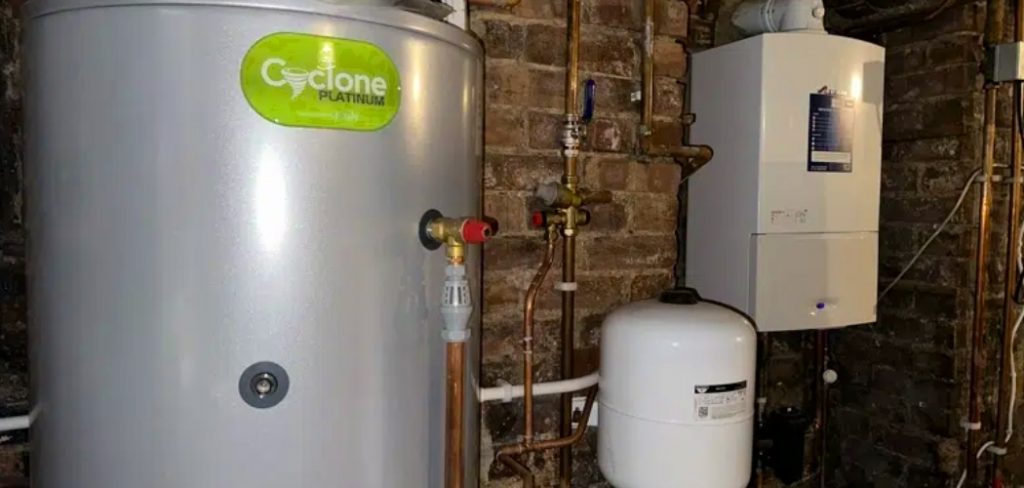
This guide on how to restart water heater will walk you through the steps to get your water heater up and running again, ensuring a consistent supply of hot water for your home. A DIY project for a water heater can save you money on installation costs, but it’s essential to follow safety guidelines and understand the system’s requirements before starting.
Identifying Your Water Heater Type
Before restarting your water heater, it’s crucial to determine what type of water heater you have, as the process may vary depending on the model and energy source. The most common types include:
Electric Water Heaters:
These rely on electricity to heat the water and are often equipped with a thermostat and heating elements. Identifying an electric water heater is easy, as they are typically connected to your home’s electrical system.
Gas Water Heaters:
These use natural gas or propane to heat the water and have a gas burner located at the bottom of the tank. They also have a thermostat and pilot light. You can identify a gas water heater by looking for a gas line that connects to it.
8 Steps on How to Restart Water Heater
Step 1: Turn off the Power
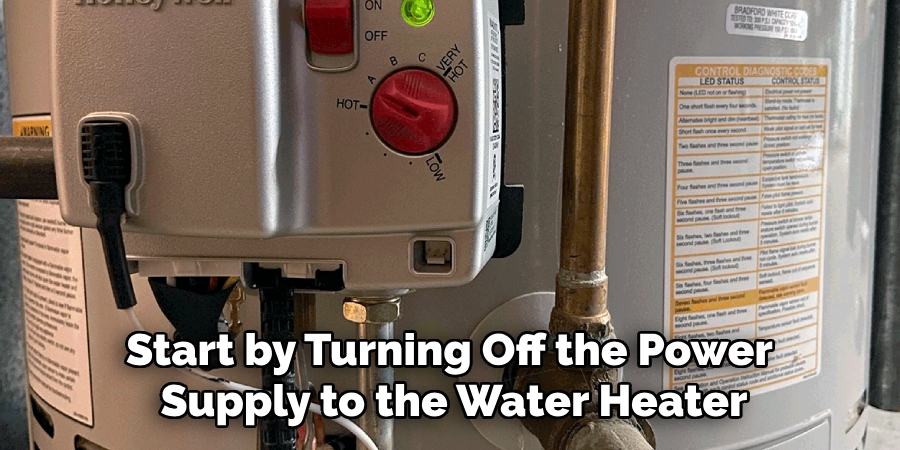
For safety reasons, always start by turning off the power supply to the water heater. If you are working with an electric water heater, locate the circuit breaker labeled for the water heater in your home’s electrical panel and switch it to the “OFF” position.
For gas water heaters, ensure the gas control valve is set to the “OFF” position to prevent any gas flow while you are working on the unit. This step is essential to protect you from potential electrical shocks or gas leaks during the restart process.
Step 2: Inspect the Water Heater
Once the power supply or gas flow has been turned off, take a moment to thoroughly inspect the water heater for any visible signs of damage or leaks. Examine the exterior of the tank for cracks, rust, or corrosion, as these could indicate underlying issues that need repair before restarting. Additionally, check the water connections at the top or bottom of the unit to ensure they are secure and not leaking.
For gas water heaters, verify that the gas line and connections are intact and free from any unusual odors that may suggest a leak. This inspection step helps to identify potential problems early and ensures your water heater is safe to restart.
Step 3: Wait for the Water Heater to Cool Down
Before restarting your water heater, it is crucial to allow sufficient time for it to cool down. This step is particularly important if you have been experiencing issues with overheating or if you recently drained the tank. A good rule of thumb is to wait at least 30 minutes after turning off the power supply before proceeding.
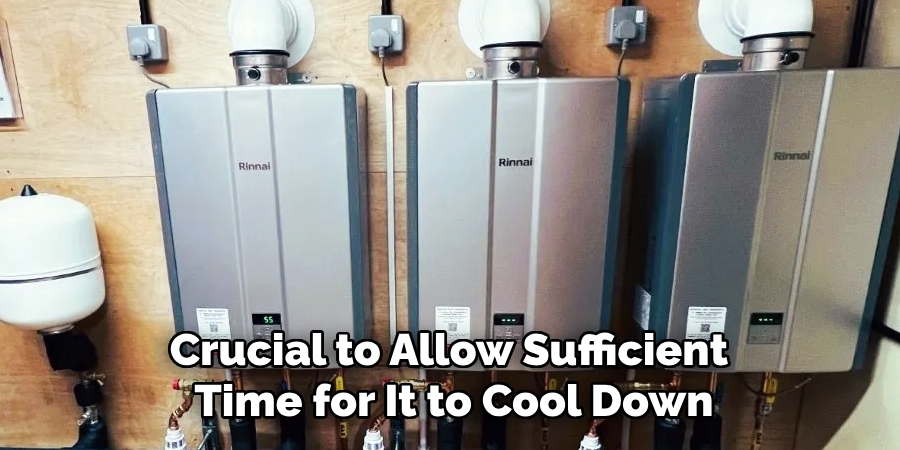
You can also use this time to gather the necessary tools and equipment for the restart process, such as a screwdriver, pliers, and a flashlight.
Step 4: Check the Reset Button (Electric Water Heaters)
For electric water heater models equipped with a reset button, locate it on your unit. This button is typically red and located near the thermostat or heating elements.
Pressing the reset button may resolve issues related to a tripped circuit or overheating. However, if you find that the reset button keeps tripping repeatedly, there may be an underlying issue that requires professional assistance.
Step 5: Check the Pilot Light (Gas Water Heaters)
For gas water heaters, the pilot light is a critical component responsible for igniting the burner. To check the pilot light, first remove the access panel or inspection window at the base of the water heater diy to see if the flame is burning. If the pilot light is out, relight it following the manufacturer’s instructions, which are typically printed on a label attached to the water heater.
Use a long-handled lighter or match to reignite the pilot, and be sure to turn the gas control knob to the “Pilot” position while holding down the ignition button (if applicable). Once the pilot light is lit, hold the knob down for 30-60 seconds to allow the thermocouple to heat up and ensure the flame stays lit. If the pilot light does not stay on or you detect a gas smell, turn off the gas supply immediately and contact a professional technician to assess the issue.
Step 6: Check the Thermostat Settings
After relighting the pilot light (if necessary), make sure to adjust the thermostat settings to your desired temperature.
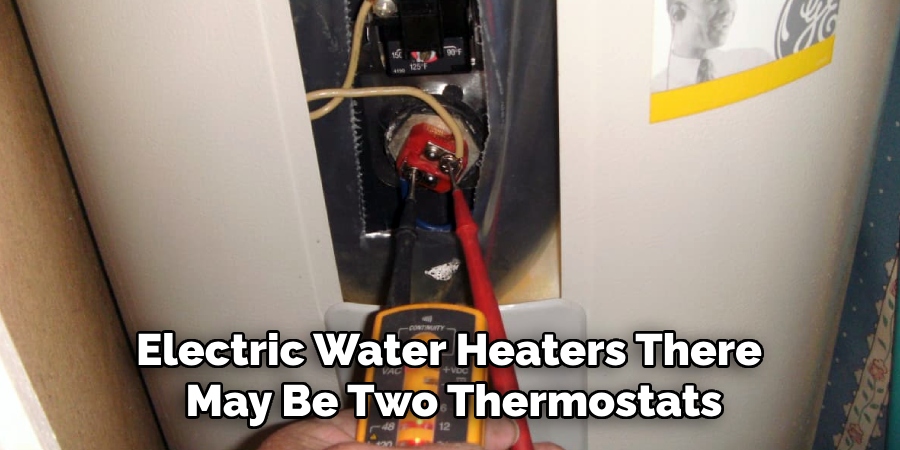
For electric water heaters, there may be two thermostats, one for the upper heating element and one for the lower. Adjust both thermostats if needed. Gas water heaters typically have a single thermostat that controls the burner and maintains a consistent temperature.
Step 7: Turn on the Power or Gas Supply
Once you have completed all necessary checks and adjustments, it’s time to turn on the power supply or gas flow to your water heater. For electric models, flip the circuit breaker back to the “ON” position, and for gas models, turn the gas control valve to the “ON” position.
Step 8: Monitor for Proper Operation
After restarting your water heater, it’s essential to monitor its operation over the next few days to ensure there are no further issues. Check for consistent hot water supply, unusual noises or odors, and any signs of leaks.
If you continue to experience problems with your water heater after following these steps, it may be time to call a professional plumber or technician for further assistance. Regular maintenance and inspections can also help prevent unexpected breakdowns and prolong the lifespan of your water heater.
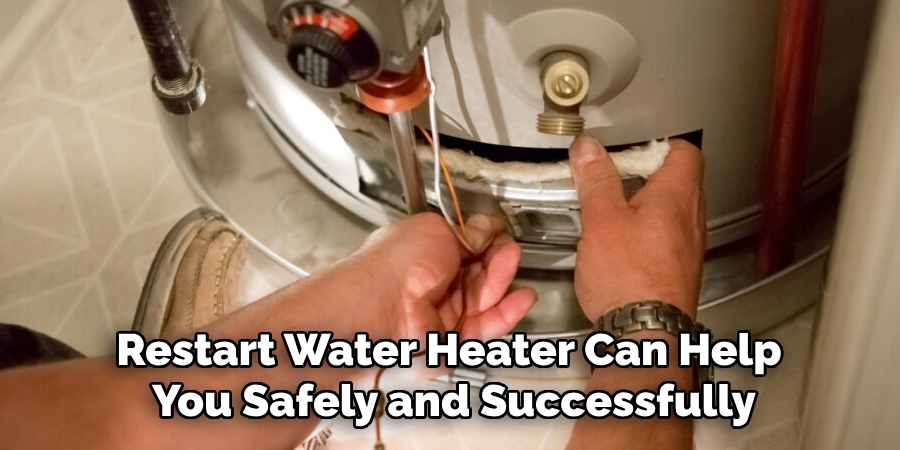
Following these steps on how to restart water heater can help you safely and successfully restart your water heater if it has unexpectedly stopped working. Remember to always prioritize safety and do not hesitate to seek professional help if needed. Keep an eye out for any warning signs that may indicate a more significant issue, and regularly perform maintenance tasks such as flushing the tank to keep your water heater running smoothly. With proper care, your water heater should provide you with reliable hot water for years to come.
Frequently Asked Questions
Q: How Often Should I Perform Maintenance on My Water Heater?
A: It is recommended to have your water heater professionally serviced once a year, but you can also perform regular maintenance tasks yourself, such as draining the tank and checking for leaks or unusual noises.
Q: Why is My Water Heater Not Producing Hot Water?
A: There could be several reasons for this, including a broken heating element, faulty thermostat, or gas supply issues. It’s best to consult a professional if you are unable to diagnose the problem yourself.
Q: Is it Safe to Restart My Water Heater on My Own?
A: As long as you follow proper safety precautions and have some knowledge of your water heater’s components and operation, it is generally safe to restart it on your own. However, do not hesitate to seek professional help if you are unsure or uncomfortable with the process.
Q: How Can I Tell if My Water Heater Needs to be Replaced?
A: Some signs that may indicate it’s time to replace your water heater include frequent breakdowns, old age (typically over 10 years), and a significant decrease in energy efficiency. It’s best to consult a professional for an assessment if you are unsure about the condition of your water heater.
Q: How Do I Know If There is a Gas Leak in My Water Heater?
A: Signs of a gas leak can include a strong odor of gas, hissing or whistling noises near the gas supply line, and noticeable bubbles in a dish soap and water solution applied to the connections. If you suspect a gas leak, immediately turn off the gas supply and seek professional help.
Conclusion
Restarting your water heater may seem like a daunting task, but by following the outlined steps and prioritizing safety at each stage, you can successfully restore your hot water supply. Always remember to turn off the power or gas supply before starting and conduct a thorough inspection to rule out any potential hazards. Whether you are dealing with an electric or gas water heater, addressing minor issues promptly and ensuring the unit is operating at the correct settings can save you time and prevent further complications.
If problems persist or if you are uncertain about any part of the process, do not hesitate to consult a professional technician. With regular maintenance and attention to detail, your water heater will continue to function efficiently, providing you with the comfort of hot water whenever you need it. Thanks for reading this article on how to restart water heater and we hope it has been helpful!
About the Author
Adrian Green is a passionate woodworking enthusiast who has dedicated his life to the craft of woodworking. From his early days working alongside his father in the family woodworking shop, Adrian has honed his skills and developed a deep love for creating beautiful, functional pieces with his hands. As the voice behind The Woodenify Blog, he shares his knowledge, tips, and inspiration with fellow woodworkers of all skill levels, helping them build confidence in their abilities while learning new techniques.
Professional Focus
- Specializes in DIY woodworking projects, from furniture making to home décor.
- Provides step-by-step guides, tips, and practical tutorials for woodworkers at any skill level.
- Focused on empowering readers with confidence and knowledge through easy-to-follow instructions and hands-on techniques.
- Passionate about building a community where makers can share, learn, and grow together in the world of woodworking.
Education History
University of Craft and Design – Bachelor of Fine Arts (BFA) in Woodworking and Furniture Design
Woodworking Apprenticeships – Gained extensive hands-on experience through various workshops and mentorships with seasoned craftsmen, refining carpentry and furniture-making skills.
Expertise
- DIY woodworking, carpentry, furniture making, and home décor projects.
- Creating clear, accessible tutorials and guides for beginner to advanced woodworkers.
- Helping readers experience the satisfaction and fulfillment of turning raw materials into stunning finished products.
